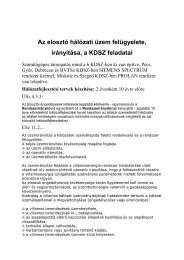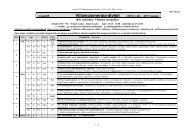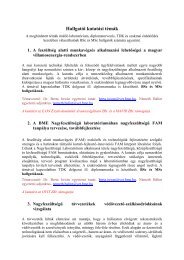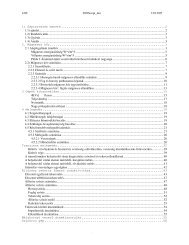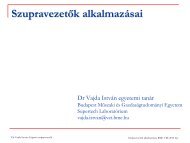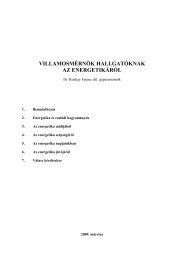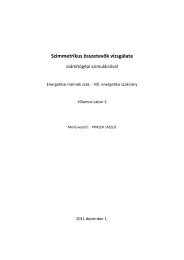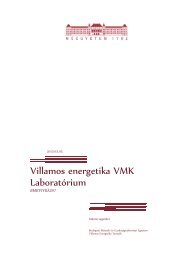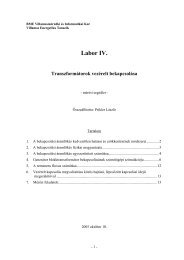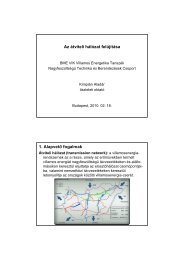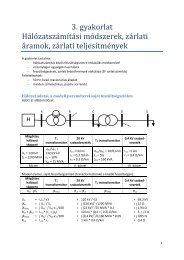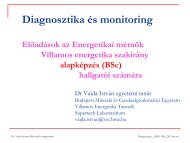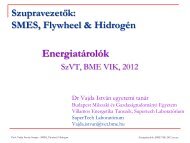Transformer models in EMTP/ATP
Transformer models in EMTP/ATP
Transformer models in EMTP/ATP
You also want an ePaper? Increase the reach of your titles
YUMPU automatically turns print PDFs into web optimized ePapers that Google loves.
Core representation<br />
• Attached to the fictitious N+1th w<strong>in</strong>d<strong>in</strong>g<br />
• Topologically “correct” core model, with<br />
nonl<strong>in</strong>ear <strong>in</strong>ductances represent<strong>in</strong>g<br />
each leg and limb<br />
– Triplex<br />
– 3- and 5-legged core<br />
• Flux l<strong>in</strong>kage-current relation by Frolich<br />
equation and relative lengths and<br />
areas.<br />
• Fitt<strong>in</strong>g to Test Report<br />
λ<br />
i<br />
λ =<br />
a'<br />
+ b'<br />
⋅|<br />
i |<br />
i<br />
R o<br />
L l R l<br />
L o<br />
R y<br />
L y<br />
L l R l<br />
R y<br />
L y<br />
L l R l<br />
R o<br />
L o<br />
15 / 19<br />
11/6/2012<br />
<strong>Transformer</strong> model<strong>in</strong>g at high<br />
frequency<br />
• <strong>Transformer</strong> <strong>models</strong> <strong>in</strong> <strong>EMTP</strong> are valid for<br />
frequencies up to 2 kHz<br />
• To study phenomena with characteristic frequency <strong>in</strong><br />
range of 2 - 30 kHz, capacitive coupl<strong>in</strong>g among<br />
w<strong>in</strong>d<strong>in</strong>gs and to ground must be added<br />
• Above 30 kHz a more detailed representation of<br />
<strong>in</strong>ternal w<strong>in</strong>d<strong>in</strong>g arrangement is required<br />
– Interw<strong>in</strong>d<strong>in</strong>g and <strong>in</strong>terturn/disks capacitances must be taken<br />
<strong>in</strong>to account<br />
• Above 100 kHz the presence of ferromagnetic<br />
material has just secondary importance.



